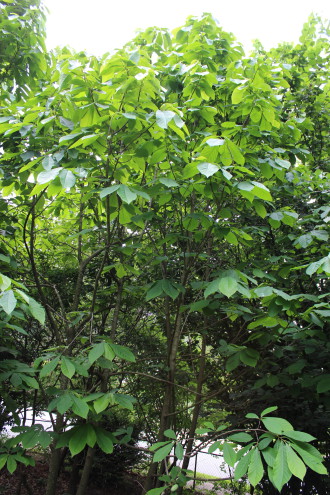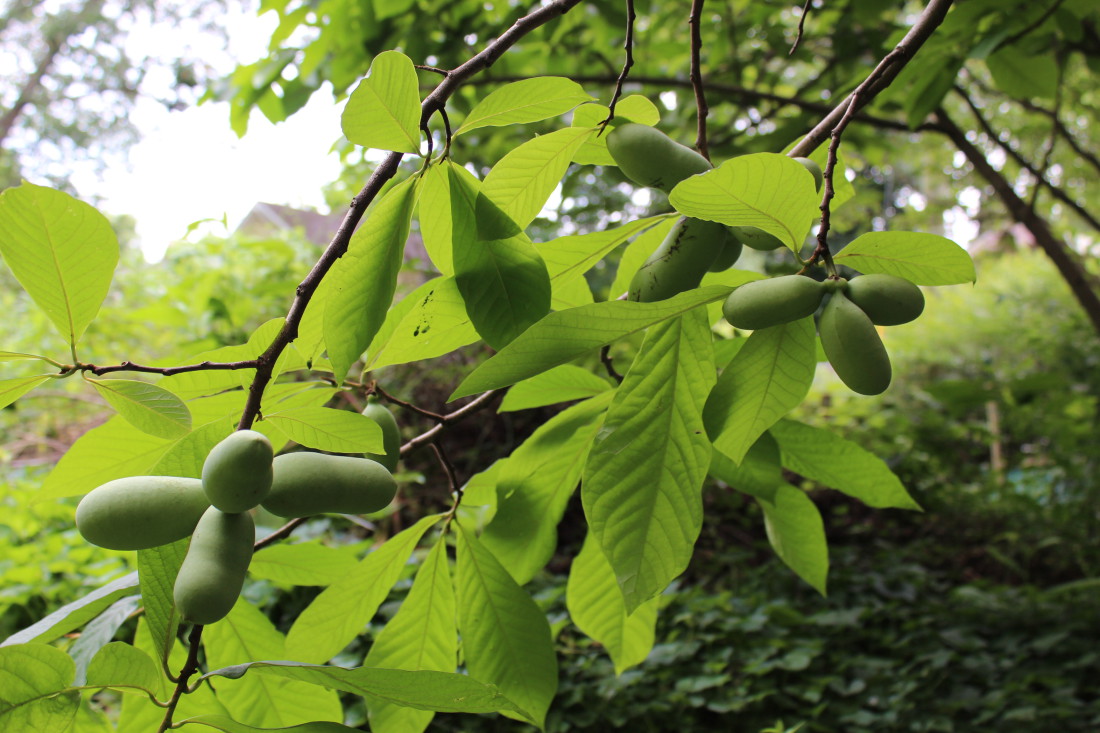Never eaten a pawpaw? You’re not alone.
“The fruit is hard to transport and keep fresh, so the modern consumer has probably never even seen one,” says Heather Rayburn of the once-important food source for Native Americans, early settlers and, in more recent times, poor Appalachians. As a staff member at the Botanical Gardens at Asheville and a native plant advocate, Rayburn’s out to make the pawpaw popular again. She’ll host a book club in celebration of pollinator month around Pawpaw: In Search of America’s Forgotten Fruit, by Andrew Moore, June 21, at the gardens.

But it’s not just the fruit that’s fallen out of favor, Rayburn notes, it’s native plants in general. And that’s where the pollinator connection comes in.
“Our native plants and insects have co-evolved together,” she explains, “and many of our native pollinators can only survive in the presence of specific native plants.” She adds that, unfortunately, non-natives have taken over the American landscape — with a good number becoming invasive.
Rayburn’s not just talking about bees, stressing that we rely on other pollinators to fertilize our crops, too. In the case of the pawpaw tree (Asimina triloba), those pollinators are carrion beetles and flies. “[They] aren’t as sexy as bees,” she concedes, “but they also play a huge and important role in a healthy ecology, and they’re in trouble.” Luckily, they find the tree’s meat-colored blossoms, with a smell described as (quit reading if you’re squeamish) rotting flesh, irresistible.
She knows most folks don’t select invasives with any negative intention. After all, they can be found at local nurseries. As an avid gardener, she admits to making mistakes herself early on, with what turned out to be non-native plants. “Once I got things in balance, I started attracting so many more insects and birds to the yard,” she shares — not just flies to her pawpaw patch, but also monarch butterflies, which flock to her milkweed.
That’s what Rayburn hopes will be the event’s take-home message: Everyone can help the plight of pollinators and native plants. “They don’t have to be scientists or political activists or work at an environmental organization to do something substantial.”
Simply cutting down English ivy or bittersweet vines off a tree can make a big difference, she says. But when it comes to selections for the garden, “If you care about pollinators or fear the collapse of the food chain, then go with native plants,” states Rayburn briskly.
Sample fresh pawpaw and pawpaw jam at the event, hear Rayburn’s stories about the native tree (like why the pawpaw is called “the poor-man’s banana”) and discuss Moore’s ode to the love-it-or-hate-it fruit, which should be read in advance. Copies of the book are available at the gardens’ visitor center.




I have a few pawpaw tree’s , I would like to pick them when it’s time,but I have the wild life getting them before I can get to them.. Is there any way I can fix some kind of cage or something to keep the wildlife out for me to get them for me.?😊😯
Hi TJ — Take a look at this website:
https://www.ehp.qld.gov.au/wildlife/livingwith/flyingfoxes/netting_fruit_trees.html
Jay Kranyik, our garden manager at the Botanical Gardens at Asheville, said if your tree is out in the open, you could get mist netting (the plastic netting sold for blueberries) and scrunch it around the trunk of a tree up to five feet off the ground. You can secure it with clips/string. If it’s think enough around the trunk, he said this should deter the squirrels. Hope that helps. Cheers, Heather